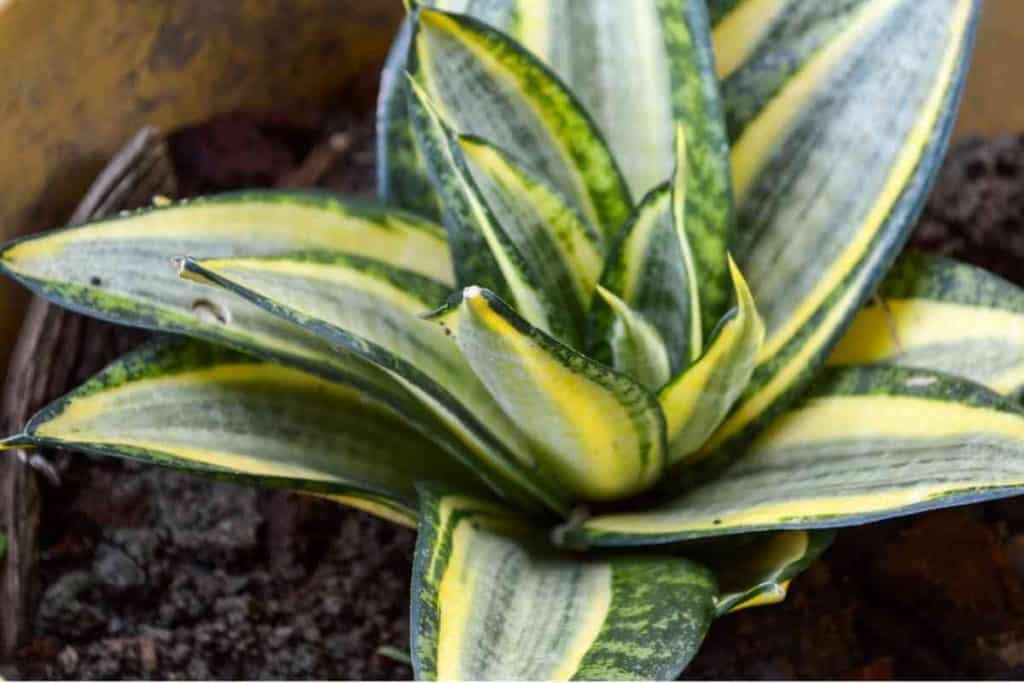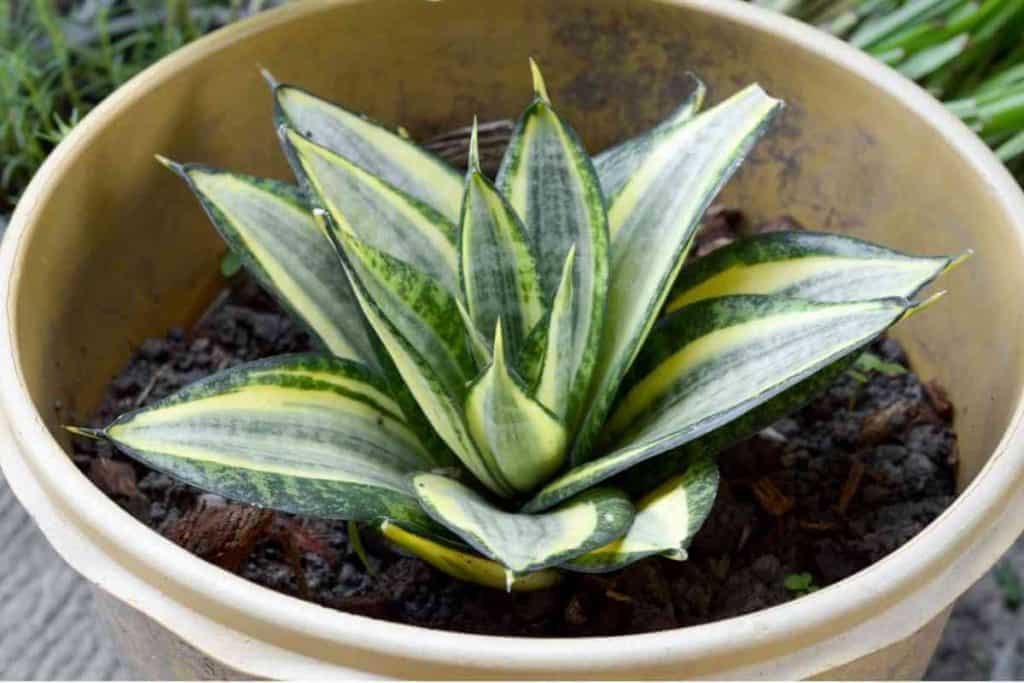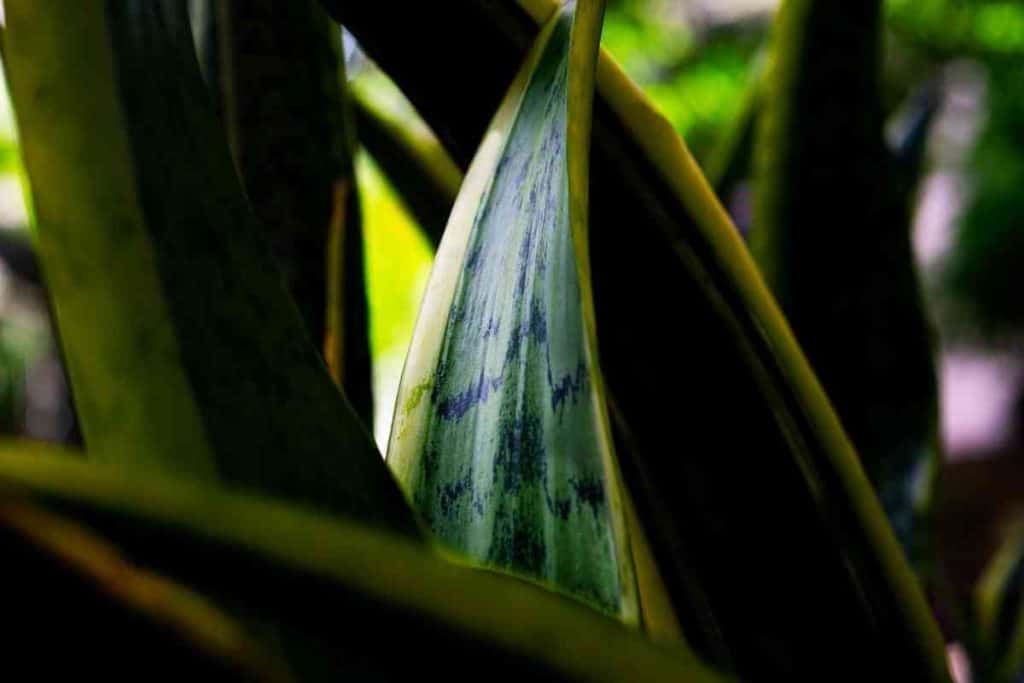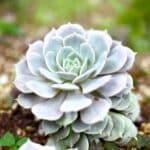Known for its attractive looks, you will be making the right decision if you make the sansevieria night owl a part of your indoor plant collections.
It is a newer hybrid of the renowned Hahnia cultivar and comes from the Dracaena family (the Dracaena family consists of 70 species of succulent plants)
It is a very easy-to-grow and maintenance plant, that even when it is grown by complete beginners, it can’t be affected by unfavorable conditions. However, the sansevieria do best in bright indirect sunlight and under low humidity levels.
Its watering should be done when the soil is completely dry. In this post, we will discuss the complete details of sansevieria night owl care and how to grow it.
Let’s start by learning more about the plant!
Table of Contents
What is Sansevieria Night Owl? | Sansevieria Night Owl Origin
| Common Name | Night Owl Snake Plant |
| Botanical Name | Sansevieria Night Owl |
| Plant Type | Epiphytic (hemi-epiphytic) |
| Family | Dracaena |
| Sun Exposure | Partial |
| Soil pH Acidic | neutral |
| Mature Size | 3–8 ft. tall (indoors), 10–13 ft. tall (outdoors), 1–3 ft. wide |
| Soil Type | Well-drained, sandy, cactus soil mix |
| Leaf Color | Dark and light green |
| Native Area | Africa, Madagascar, South Asia |
| Temperature | Between 55º & 85 ºF (12 º & 29 º C) |
| Toxicity | Mildly toxic to humans & animals |
| Cool Hardiness | Sensitive to Frost |
Also known as the Night Owl Snake plant, the sansevieria night owl is a cultivar of Snake Plant (Mother-in-Law’s Tongue) and a newer hybrid of the renowned Hahnia cultivar.
It features a shiny, dark green spear-shaped foliage surrounded by milk-colored variegation. Its cultivar produces a low and wide rosette of elliptical, upright leaves.
The sansevieria is a top-notch plant from the Dracaena family (consisting of 70 succulent plants native to Africa, Madagascar & South Asia).
The plant is an easy-to-grow and maintenance plant, as it can thrive in several conditions, handle itself when neglected, and purify the air.
Another appealing feature of this plant is that it is very difficult to kill, as it has a strong enduring ability that has contributed to its popularity.
However, that is not to say you should abuse its tolerance by not giving it the favorable conditions and attention it deserves, as its beauty can be impaired by prolonged drought and poor soil.
Related Post: Cebu Blue Pothos Care
Is Sansevieria Night Owl Easy To Care For?
To put simply, YES, the sansevieria night owl is very easy to care for. Like we earlier mentioned, even a complete inexperienced gardener can grow and care for the plant because not only will it tolerate unfavorable conditions, it can be almost impossible to kill.
However, given its critical care will give you the best and most attractive plant you ever desired.
Sansevieria Night Owl Care and Growing Guide

For a better and healthier sansevieria night owl, you will need to give them the best care factor possible, including its light, watering, humidity, and temperature requirements, amongst other things that we will be highlighting below.
Now, let’s talk about the best sansevieria night owl care factors and how to grow the plant:
Natural Habitat & Light Requirements
Although it is native to Africa, Madagascar & South Asia, the sansevieria night owl is a tolerant plant that can thrive in every area, including indoors, except on the south window sill, where it will be exposed to the heat of the direct sunlight for hours.
Therefore, the plant requires indirect light to make it a lot comfortable.
Sometimes, keeping the plant away from any light source might not pose a severe threat to it, as it is one of the few species that will tolerate or thrive under artificial lighting, so it is a common design prospect for spaces with small natural lighting.
But it grows faster and has more intense colors and patterns on the leaves whenever it receives some direct morning light, so the positions along the East window are perfect.
Sansevieria Night Owl Watering Requirements
The sansevieria night owl is considered a succulent plant, which reserves water in its thick pointed leaves.
In other words, it can almost comfortably handle long periods of full dryness of substrate. It can easily be maintained when facing a water shortage in contrast with when it has excess water.
So, unlike other houseplants, it is not advisable to water more frequently. Water once every 15 days during the growing season, just as it is advisable to water only once a month in the winter season. You must equally ensure the soil is fully dried before you water it.
Again, whenever you’re watering the plant, you must make sure that immediately after ten minutes or so, you check if there’s excessive water that has clogged in the tray of the pot.
The sansevieria can deal with any condition yet is very sensitive to dwelling in water; hence, you must ensure the tray is emptied.
Humidity & Temperature
Humidity-wise, since the sansevieria night owl is a plant that is native to naturally dry and warm air environs, it can, without any difficulty, adapt to growing conditions in common indoor areas. Also, it will not require any added moisture or spraying of leaves.
It is very much okay to frequently get rid of the specks of dust using a damp cloth, as it will help to give the leaves new looks. Besides, during watering, you must try not to wet the aboveground part of the plant.
The reason is that whenever water glides speedily through its smooth thick leaves and settles within the heart of the rosette, it can lead to leaves rotting or discoloring.
Temperature-wise, in its natural habitat, the USA climate zone, 9 to 11 to be precise, the sansevieria night owl can grow outdoors in the garden in as much as the soil is well-drained and is not excessively moist.
On the other hand, in other zones where the winter temperature falls below the freezing point, the sansevieria night owl can grow best when it is potted and protected from low temperatures. It thrives in a room with a temperature range of 55°F to 85°F (12ºC to 29ºC).
Despite the above, the sansevieria night owl displays high tolerance and patience level in this situation. Contrary to several other indoor plants, it will survive for a few weeks in a space that features a temperature drop of around 45°F (7°C).
However, during the summer, the sansevieria night owl does not care if the temperature reaches 100°F (37°C) or not, in as much as you keep it away from the heat of direct sunlight.
Soil Requirements
One of the most important requirements of the sansevieria night owl is the soil condition. Here, you must ensure its soil is airy and very absorbent.
This is because the plant will struggle in heavily compacted soil that retains a long period of moisture. The best application measure is to get an already prepared cactus mixture.
You can also apply other means to the soil by preparing a homemade mix with available ingredients like one-part garden soil, one-part peat moss, and two parts perlite or builder’s sand.
If you want to improve the soil’s nutritional value, you can add a little bit of compost. However, do not allow its share to be more than one-tenth, as compost tends to keep moisture, which ordinarily will not be best for this plant.
Fertilizing Requirements
Unlike most houseplants, the sansevieria night owl can always survive even without the use of fertilizer, as it often derives its nutrient from what is available to it in the soil in which it grows.
However, it would be best not to allow it to starve, as starvation will lead to its stunted growth.
Every month, you must make sure that you dissolve in the water part of the recommended concentration of a balanced liquid fertilizer with the same amount of sodium, phosphorus, and potassium content and apply it during the watering period.
Apart from the above, you can equally go with a slow-release fertilizer in granules mixed into the substrate during the start of the season.
If you have followed the required dosage and seem confused about exactly the amount of fertilizer you will add, the best thing is to apply less of it because too many nutrients are riskier than a lack of them.
Read Also: Monstera Adansonii Care
Planting (Potting & Repotting) Sansevieria Night Owl

As a hybrid species, the sansevieria night owl retains all the significant characteristics of the indigenous plants from which it originated. One of these characteristics is a weakly branched and relatively small root system.
In its natural habitat, the Night Owl is often seen growing on dry, stony, or sandy soil, in which the root lack sufficient room to grow and branch.
So, indoors, you’re required to plant it in small capacity containers, which must feature at least one opening to position a layer of coarse gravel or tile fragments to allow drainage of the soil.
The sansevieria night owl can grow in the same pot for years. Meanwhile, the lack of space in the container provides a stimulating effect on the looks of new shoots that regularly grow close to the edge of the pot.
Despite how cramped you see the new shoots, as that is what sansevieria night owl likes, you should make sure you avoid rushing into transplanting.
Then, immediately you find out that the newborn shoots are filling the pot, you can transplant it into a new, bit bigger container.
How to Prune Sansevieria Night Owl
Pruning refers to the activities and procedures carried out to ensure your plant keeps its healthy look and ensures moderated size or shape. You can get rid of any old leave that has started to wilt, discolor, or those with physical damage like cracked tips or crushing.
The best equipment to carry out pruning activities in your sansevieria night owl is a sterile knife or scissors, which you use to cut the leaf along the rosette base, approximately ⅓ inch above the surface of the substrate.
Sansevieria Night Owl Propagation
Propagation refers to the multiplication of plant collection from cuttings of the parent plant.
It is quite easy to propagate the sansevieria night owl, as you can two it through various means: division, cuttings in soil, and cuttings in water. Below are the propagation methods of the sansevieria night owl.
Propagation by Division Method

To propagate the sansevieria night owl by division method, you must ensure you follow the steps below;
- Carefully bring out the plant from the container, remove all soil, then rinse the root under water spray.
- Once the root is totally clean and you’re seeing where each shoot grows, use a sterile tool to separate them, together with part of the root ball.
- Plant the new ‘Night Owl’ in a small container that is one inch wider than the root’s diameter. The pot used must have a drainage hole, and the substrate with which you fill it should be a mixture of perlite and standard soil or sand in a ratio of half to half.
- Water the newly planted sansevieria night owl, and allow the excess water to drain, and place it in a shaded place.
Cuttings in soil Method
You must follow the recommended step below if you want to propagate your sansevieria night owl by cutting in the soil;
- Cut off a healthy and grown leaf one inch above the surface of the substrate.
- The leaf should be left in the air for some hours so that the cut can dry and form a scab.
- Put the leaf into a pot with a moist mixture of substrate and perlite or sand, making sure that one quarter or one-third is in the substrate. You can put many leaves into the same pot to get more plants at the same time.
It would help if you didn’t forget that the rooting process can take some time, precisely one or two months, yet, you’ll only start to see the new leaves after six or seven months. So, your patience at this point is precious.
Cuttings in Water Method
If you don’t want to use the first two propagation methods above, there’s always an alternative method you can use to reproduce your sansevieria night owl. Using the cuttings in the water method requires the following steps;
- Put the leaf or the leaf parts in a glass of water, ensuring that a quarter of their total length is above the water level.
- Keep the glass in a warm place with lots of filtered light. Since the rooting process takes a long time (2-3 months), add lukewarm water occasionally to maintain a constant level.
- Change the water from time to time to prevent the growth of microorganisms that can cause the cuttings to rot.
- When mustache-like roots appear together with the cut, transplant the new sansevieria night owl into a cactus soil mix (or self-made substrate).
Frequently Asked Questions
Why Do the Leaves of Sansevieria Night Owl Turn Yellow?
The sansevieria night owl turns yellow as a result of poor soil permeability and over-watering. To avoid this condition, before you water, you must ensure the top 2inches of the soil is dry, especially when growing in heavy and dense soil.
Why Do the Leaves of Sansevieria Night Owl Turn Brown?
Although it is succulent, it still doesn’t make the sansevieria night owl a cactus; it cannot survive the heat of the afternoon sunlight.
In other words, the brown color it produces comes from direct exposure to the sun. So, you’ve to take them away from this exposure as often as possible.
How Tall Does Sansevieria Night Owl Grow?
Although it is not so much of a rapid grower, the sansevieria night owl can still produce a growth rate of 10 to 16 inches.
What is the Difference between Sansevieria Night Owl & Moonshine?
Despite the glaring similarities between both plants, you can still find several differences between them.
Most notable is that the sansevieria night owl is a hybrid produced by crossing within a cultivar called Hahnii sansevieria. In other words, it is a dwarf species that grows in a low and wide rosette up to one foot.
On the other hand, the sansevieria moonlight is a cultivar of the trifasciata. In other words, it grows straight, possesses larger leaves, and grows 2 feet tall. The color of its leaves is lighter than that of the former and features a dominant silver undertone.
Why is the Sansevieria Night Owl Drooping?
Drooping simply refers to the wilting of the plant. Whenever you notice any drooping in your sansevieria night owl, it means it is either there’s a long period of drought, or you’ve over-watered it.
But the more obvious would be later; therefore, you have to be mindful of excess watering.
Read Also: Monstera Epipremnoides Care




